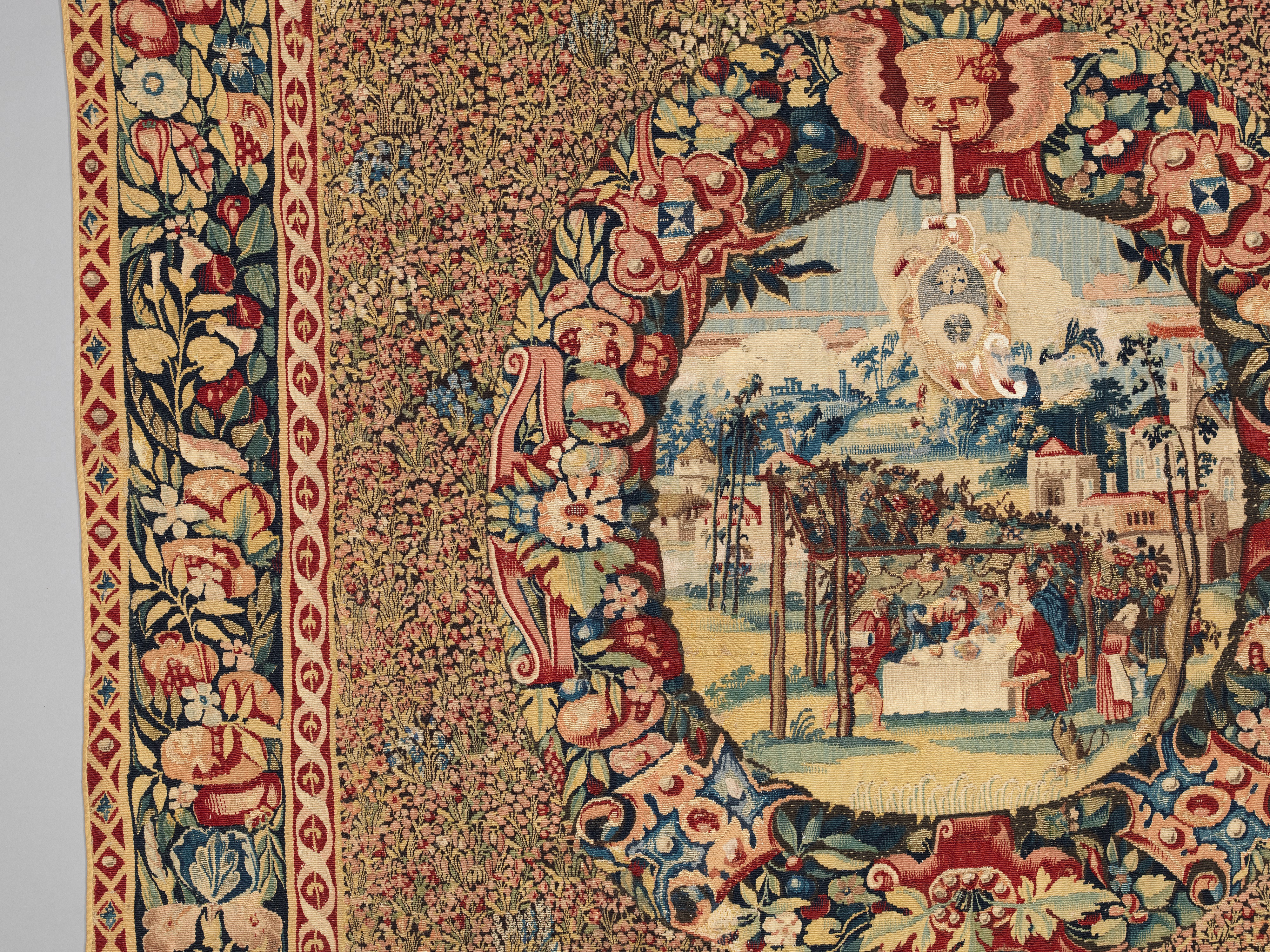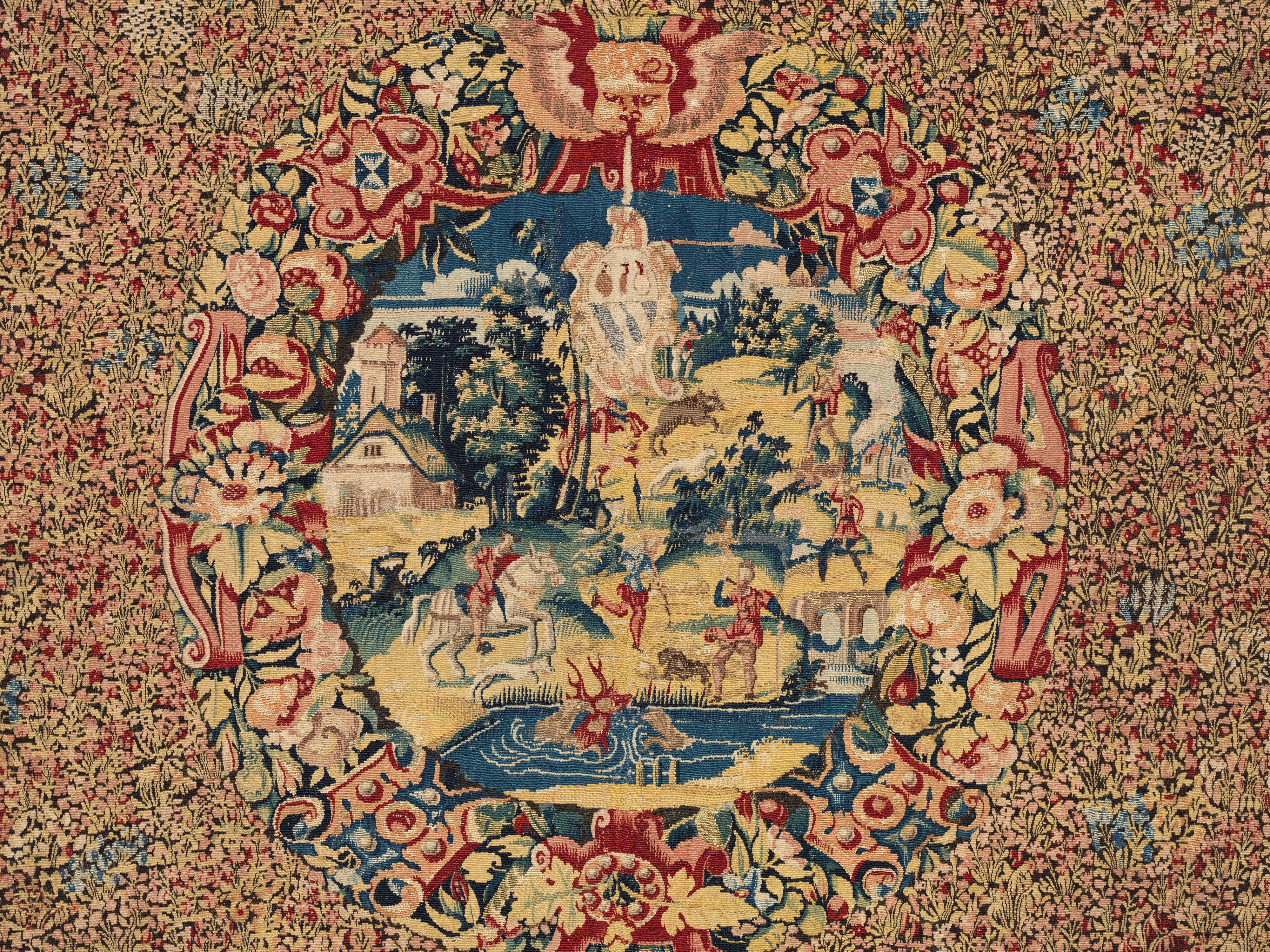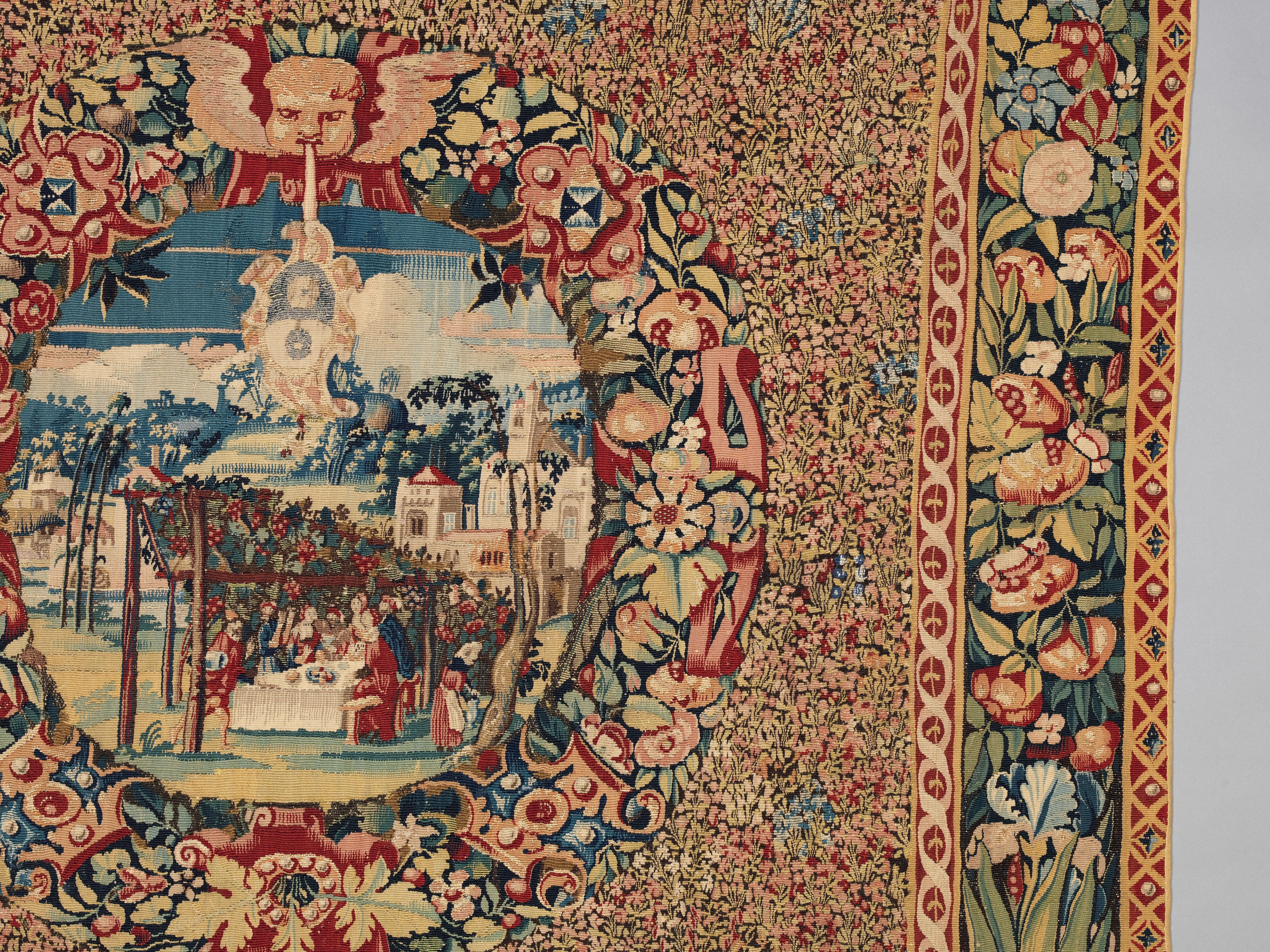Cartouches with landscapes and armorials against a mille-fleurs ground
Not on view
With the distinctive long, low format of a wainscot tapestry, this hanging can be attributed with confidence to weavers working in the great Flemish city of Bruges, who since the mid-fifteenth century had sought to distinguish themselves from the massive, monumental narrative and allegorical wall hangings perfected by Brussels weavers, by specializing in armorial tapestries against mille-fleurs grounds, as well as in similarly formatted choir tapestries. As experienced in this tapestry, by the mid-sixteenth century Bruges’ cartoon designers and weavers updated conventional flower-strewn mille-fleurs by developing a warmer palette and by massing the flowers so closely together that the dark blank ground is almost obscured. The floral pattern becomes a glorious, abstract mass of dappling color; in technique, daring weaving styles like eccentric wefts (which deviate in thin sinuous lines from the regular grid of the warp and weft) are manipulated to represent the stems and lower leaves of the plants.
Wainscot tapestries were particularly popular amongst English clientele (Antwerp weavers called them “op Engelse wijze”- ‘English style’) and on the Italian peninsula, where they were in high demand as “spaliere” to hang over cassone chests. Although the armorials suspended within the three garlanded landscape cartouches have not yet been identified, it is likely they are associated with one of the Florentine, Genovese, Venetian or Lucchese families connected with the Bruges’ markets through trade and banking.
Due to rights restrictions, this image cannot be enlarged, viewed at full screen, or downloaded.
This artwork is meant to be viewed from right to left. Scroll left to view more.





